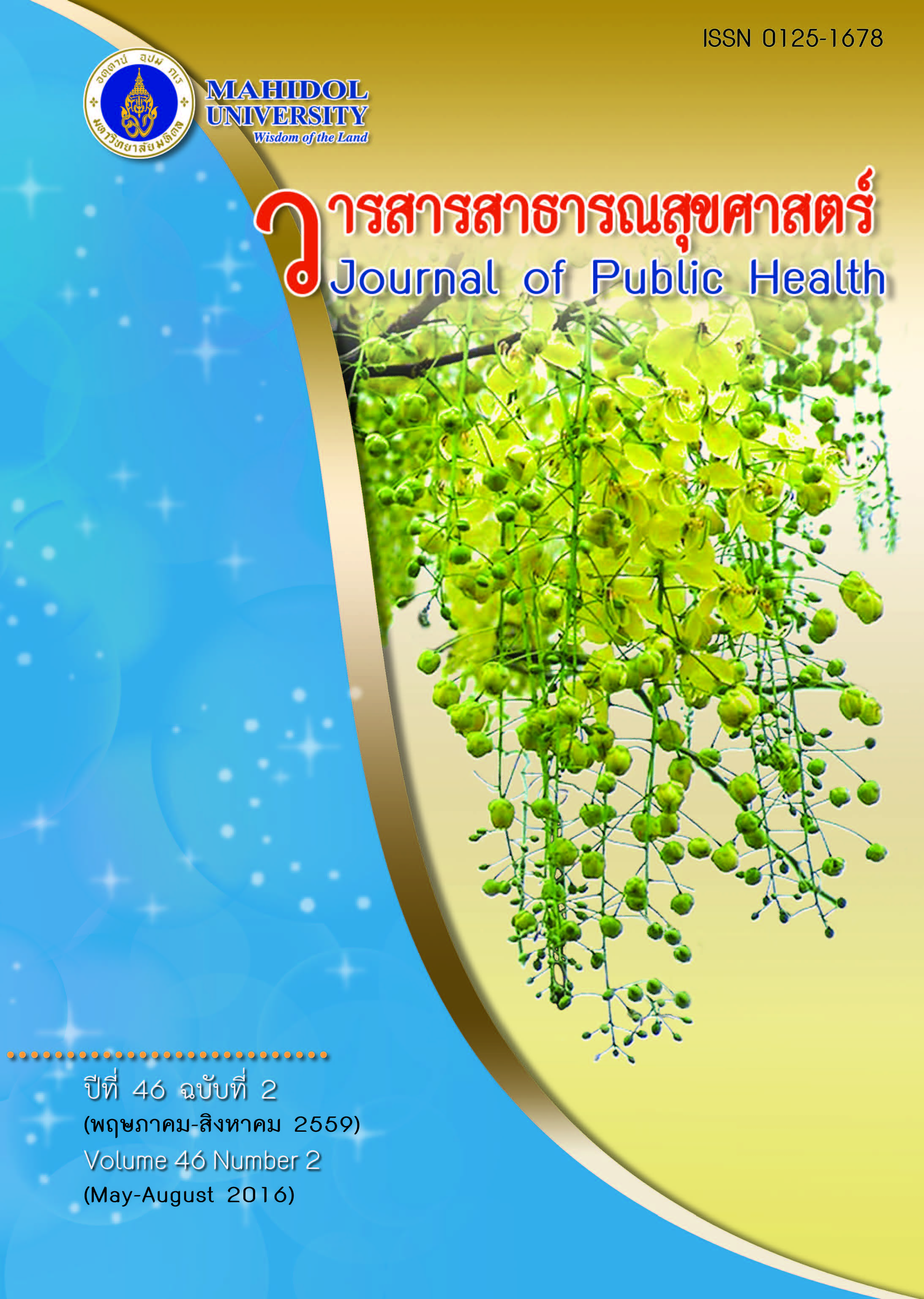การศึกษาการเคลื่อนตัวของมวลอากาศแบบย้อนกลับที่ส่งผลต่อโอโซนในระดับภูมิภาคของทวีปเอเชียในปี ค.ศ.2004
Keywords:
backward trajectory, HYSPLIT, โอโซน, ทวีปเอเชีย, มวลอากาศ, การแพร่กระจายในระยะไกล, Ozone, Asia, air mass, long range transportAbstract
บทคัดย่อ
การศึกษาสาเหตุการเปลี่ยนแปลงของโอโซนในทวีปเอเชีย โดยใช้ข้อมูลของโอโซนจากสถานีตรวจวัด 11 แห่งในทวีปเอเชีย ปีค.ศ. 2004 โดยเปรียบเทียบกับการเคลื่อนตัวของมวลอากาศแบบย้อนกลับเป็นระยะเวลา 10 วัน ด้วยแบบจำลอง HYSPLIT และจำแนกทิศทางการเคลื่อนตัวมวลอากาศเป็น 8 ทิศทางพบว่า มวลอากาศส่วนใหญ่มาจากทิศตะวันตก (W) รองลงมาคือ ทิศตะวันตกเฉียงเหนือ (NW) โดยโอโซนในภูมิภาคเอเชียตะวันออกมีค่าความเข้มข้นสูงเมื่อมวลอากาศเคลื่อนตัวมาจากทิศ W และผ่านแหล่งกำเนิดมลพิษภายในทวีปเช่น สถานี Happo และ Oki มีค่าเฉลี่ยรายปีของโอโซนเท่ากับ 55.9 และ 44.8 ppb ตามลำดับ ถัดมาคือ สถานี Mondy ในเขตไซบีเรียซึ่งได้รับมวลอากาศจากภายในทวีปมีค่าเฉลี่ยรายปีเท่ากับ 44.6 ppb บริเวณชายฝั่งตะวันออกของทวีปมวลอากาศที่ผ่านมหาสมุทรยาวนานกว่าทำให้มีโอโซนต่ำกว่าบริเวณอื่น เช่น สถานี Minami Torishima ซึ่งมีค่าเฉลี่ยรายปีเท่ากับ 30.7 ppb ในภูมิภาคเอเชียตะวันออกเฉียงใต้พบค่าเฉลี่ยของโอโซนที่สถานี Tanah Rata และ Bukit Koto Tabang เท่ากับ 19.0 และ 13.0 ppb ตามลำดับ สถานีทั้งสองแห่งได้รับอิทธิพลจากมวลอากาศผ่านมหาสมุทรตลอดทั้งปีทำให้ค่าเฉลี่ยต่ำกว่าสถานีที่ตั้งอยู่ทางภูมิภาคอื่นของทวีปเอเชีย โดยสถานีที่ได้รับมวลอากาศจากภายในภาคพื้นทวีปจะมีความเข้มข้นของโอโซนสูงกว่ามวลอากาศที่ผ่านมหาสมุทรจากการศึกษานี้พบว่าปัญหามลพิษทางอากาศนอกจากแหล่งกำเนิดมลพิษที่เกิดในท้องถิ่นแล้วยังต้องตระหนักถึงปัญหามลพิษที่สามารถแพร่กระจายจากระยะไกลซึ่งการศึกษาครั้งนี้สามารถใช้เป็นแนวทางในการคาดการณ์การเปลี่ยนแปลงของโอโซนในพื้นที่เฝ้าระวังได้
Analysis of Air Mass Backward Trajectory of Regional Ozone in Asia 2004
ABSTRACT
The objective of this work was to study ozone variations in Asia using data regarding ozone from 11 monitoring stations in Asia in 2004 compared with the 10-day backward trajectory of air masses by the HYSPLIT Model. The trajectories were categorized in 8 sectors of air masses. Most air masses came from the W and NW directions. The mixing ratios of ozone in E Asia were considerably high when the air masses from the W sector passed over sources of pollution such as at Happo and Oki stations with an annual average of 55.9 ppb and 44.8 ppb of ozone, respectively. Mondy station in Siberia had an annual ozone average of 44.6 ppb with air masses from the inner region of the continent. On the E coast of Asia, Minami Torishima station had a lower ozone average as the air masses passed over the ocean, with an annual average of 30.7 ppb. As most air masses passed over the ocean all year long, Tanah Rata and Bukit Koto Tabang stations in SE Asia had lower ozone averages than other stations in Asia, 19.0 ppb and 13.0 ppb, respectively. The air masses moving through different regions and sources of pollution caused ozone mixing ratio variations in Asia. The monitoring stations received the movement of air masses on the mainland and detected higher concentration compared with air mass movement from the ocean. In addition, not only local air pollution sources but the long range transport of pollution should be taken into account. The findings from this research could benefit ozone prediction particularly in the monitoring areas.
Downloads
Published
Issue
Section
License
Creative Commons License CC-BY-ND


